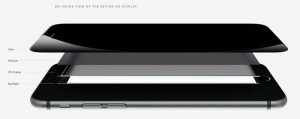What’s a Retina display? What’s a Retina HD display? Which Apple devices have Retina displays? And are they worth the money?

Put simply, a Retina display is any display to which Apple has decided to apply the name. Retina is an Apple brand for which there’s no specific definition. There are however, features which set Retina displays apart from non-Retina screens.
The first, and most important is pixel density. When Steve Jobs launched the iPhone 4, and with it the first Retina display, he described it as having a screen with so many pixels packed closely together that they were imperceptible to the human eye at a distance of twelve inches. He went to great lengths to explain that, because the iPhone 4’s screen packed in 300 pixels per inch, most people wouldn’t see them at all when the phone was a foot from their eyes.
Since then, Apple has launched several devices with Retina displays. Some have pixel densities of more than 300 pixels per inch, some with less. How can they all be called Retina? Because there are two crucial elements to whether or not pixels are perceptible: density and distance. The further your eyes are from the screen, the lower the pixel density needed to make the pixels ‘disappear.’
Generally speaking, the bigger the screen, the further your eyes are likely to be from it and so the lower the pixel density required to ‘qualify’ as a Retina display.
So, for example, iPhones from 4 to 5s had a pixel density of 326 pixels per inch,  while the current 27in iMac has only 218 pixels per inch. Given that, for most of us, the distance we sit from a 27in screen is more than one and a half times the distance at which we hold an an iPhone from our eyes, the lower pixel density is irrelevant.
while the current 27in iMac has only 218 pixels per inch. Given that, for most of us, the distance we sit from a 27in screen is more than one and a half times the distance at which we hold an an iPhone from our eyes, the lower pixel density is irrelevant.
n simple terms, Apple ‘converts’ a device’s display to Retina by doubling the number of pixels vertically and horizontal, meaning it has four times as many pixels as its non-Retina counterpart.
If it did that and nothing else, however, there would be a problem. User interface elements like menus and icons would look tiny. To compensate for this, Apple created what it calls HiDPI mode, where each interface element is doubled in size vertically and horizontally and so appears at the same size as it would on a non-Retina display.
The effect of a Retina display is to make everything look more crisp. Text, especially, benefits from Retina – it looks smoother, with the curves on characters looking like curves instead of jagged steps.
